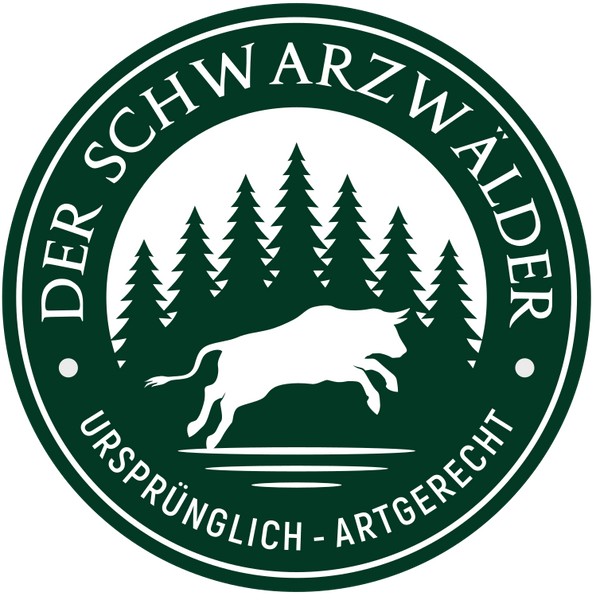The Rib Eye / Entrecote Steak
It's not without reason that it's one of the most popular steaks in the world. The fine marbling makes it incredibly flavorful and juicy. Our grill master recommends: For perfect aging and top-notch marbling, use our select prime entrecote/rib eye steaks .
The Rib Eye / Entrecote Steak – The Cut
The rib eye/entrecote steak is cut from the back of the cow. The back is a very lightly stressed muscle, which makes the meat quite tender . It is fine-grained and heavily marbling with fat.

Raising our cattle
When you buy rib-eye steaks from us, you'll always receive meat from our own livestock and the livestock of our partners. All farms are located near our butcher shop in the Black Forest , and the animals are raised exclusively on our own farm feed.
Our short transport routes (max. 50 km) protect livestock and the environment, and stress-free slaughtering on our premises ensures the quality of the steaks.
Our short transport routes (max. 50 km) protect livestock and the environment, and stress-free slaughtering on our premises ensures the quality of the steaks.
Dry-aged beef – quite normal for us
What's trendy today is tradition for us. We exclusively dry-age our beef steaks. The loss of up to 50% of liquid results in tender, flavorful meat. This aging method prevents acidification and emphasizes the meat's robust flavor.
Preparation of entrecote
Preparing entrecote on the grill – In 6 steps
- Prepare 2 zones on the grill:
1st zone: As high heat as possible;
2nd Zone: Only the indirect heat of Zone 1. - Salt the steak and place it in the hot zone, grilling it on all sides.
- Place in the indirect zone and reduce the heat.
- Insert core temperature sensor.
- When the desired core temperature is reached, remove from the grill and let rest for 2-3 minutes.
- Carve across the grain and serve.
Preparing entrecote in a pan – in 5 steps
- Preheat pan without oil for 2-4 minutes at maximum heat, preheat oven to approx. 120 °C.
- Salt the steak, add oil to the pan and sear it on all sides.
- Cook in the oven until the desired core temperature is reached.
- Let it rest for 2-3 minutes.
- Carve across the grain and serve.
Measuring the core temperature of the entrecote
A digital probe thermometer is ideal for precisely cooking meat. Tip: Measure the penetration depth by placing the probe against the piece of meat and inserting it to the mark.
Entrecote core temperature
The right core temperature is a matter of taste. For entrecote, we recommend 52°C for medium-rare. Here are the guidelines:
| Designation | Description | core temperature |
|---|---|---|
| Blue | Roasted on the outside, cool and raw on the inside | 42 °C |
| Rare / Bloody | Very reddish in the core | 48-52 °C |
| Medium-Rare | Slight discoloration, still strongly reddish | 52-56 °C |
| medium | Clearly visible color change, another shade of red | 56-60 °C |
| Well Done / Through | Almost no red tone left | 60-64 °C |






 Aus eigenem & Partner Viehbestand
Aus eigenem & Partner Viehbestand Dienstags und Donnerstags Versandtag
Dienstags und Donnerstags Versandtag
